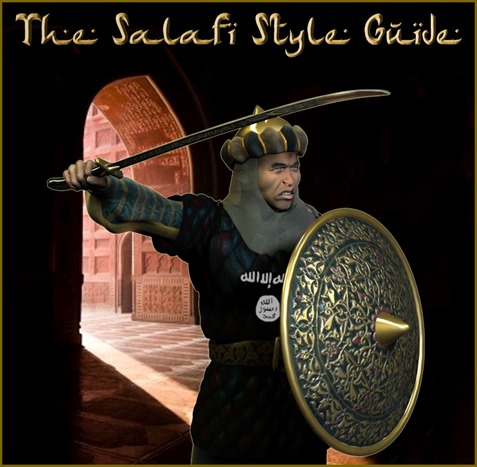
Since 9/11, the discourse about the Jihadi movement has diverged into two distinct camps (1) the apologetic and (2) the sensationalistic. Unfortunately, beyond the MSM’s focus on the gory details of terrorism, little is being done in the way of exploring the inner workings of this phenomenon and its impact on the US. The Jihadi movement remains largely a taboo subject in the media, academia, and government. The same applies to the social and political characterization of Salafism and how/if it differs from other Sunni groups.
Salafism is associated with strict interpretation of Islam–especially in the West–and is the leading ideology of the Jihadists who espouse violent jihad against non−believers (Kafirs) and those they deem to be enemies of Islam, which may even include other fellow Muslims (Takfir). Some of the better-known Salafi organizations are the Muslim Brotherhood, Hamas, the Islamic Jihad, Al−Qaeda, and ISIS/ISIL. Since the early 1990s, the Salafi movement has gained a strong foothold in many urban centers through the massive expansion of the Muslim Brotherhood organizations and Qatari funding of Islamic causes in Europe and the US. Currently, there are over 200 Salafi mosques in the US, and this number is growing steadily.
To the public who is not versed in Islamic history, religion, and culture, all Muslims seem to behave monolithically, but that is not the case. Many variants in the Syafii, Hanafi, Maliki, and Hanbali streams make up the Sunni school of Islam. Each of these four groups exhibits specialized traits through dress and ritual observance. This is even more pronounced among the adherents of Salafism, who demonstrate unique characteristics among all Sunni practitioners.
It is true that you don’t need to know how to build a watch to tell the time, but a watchmaker ignorant of the inner workings of a clock makes for a lousy horologist. So, in this spirit, I dedicate this post to all of you watchmakers out there who, in 2010 and onwards, had to burn/shred/swallow all of the in-depth training materials on the subject.
The Salafi Movement 101
By way of a quick introduction, the Salafi movement is an offshoot of Wahhabism and Hanbalism. It’s a relative latecomer (18th−19th century), and unlike mystic streams like Sufism, it represents a romantic and idealized view of history. In many ways, it is similar to other contemporary sociopolitical movements like anarchism, communism, and fascism that emerged simultaneously and attempted to reshape the traditional bonds of religion, economics, and politics and align them with the realities of the industrial world.
The emergence of modern Salafism can be roughly traced to:
- The formation of the 18th−century Wahhabi movement in the Arab Peninsula. One of the triggers for this was the Arab ruler’s disdain for the corrupt Ottoman Empire. In several regards, this was a replay of the Abbasid Revolution of the 7th-8th centuries.
- The late 19th century saw the birth of European-inspired nationalism in Egypt. This movement formed as a counter-response to British and French imperialism, which was manifested first through the Napoleonic conquest of Egypt and then through massive colonial projects like the British railway in Egypt and the French Suez Canal.
At its core, the Salafi movement advocates a return to the traditions of the salaf (literally: ‘ancestors’ or ‘the pious predecessors’). These are taken to be the first three generations of the companions of the Prophet Muhammad, who died in 632 CE.
There is a lot of legal and ceremonial literature about Salafism, but there also seems to be a shortage of accurate and consistent basic how−to guides. This appears to be an ongoing problem for recruits and converts. As Salafi organizations worldwide expand through Internet outreach programs, they frequently re−publish various visual aids to impart complex religious practices to their new followers. Ironically, many of these guides are themselves flawed.
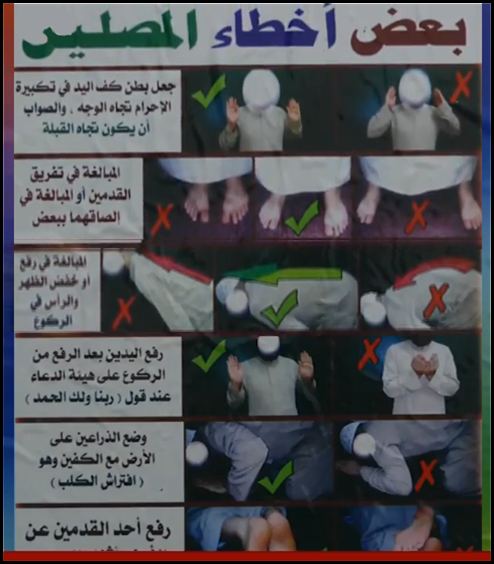
Image 1: An example of a Salafi Do’s and Don’ts guide showing the basic positions for a prayer sequence
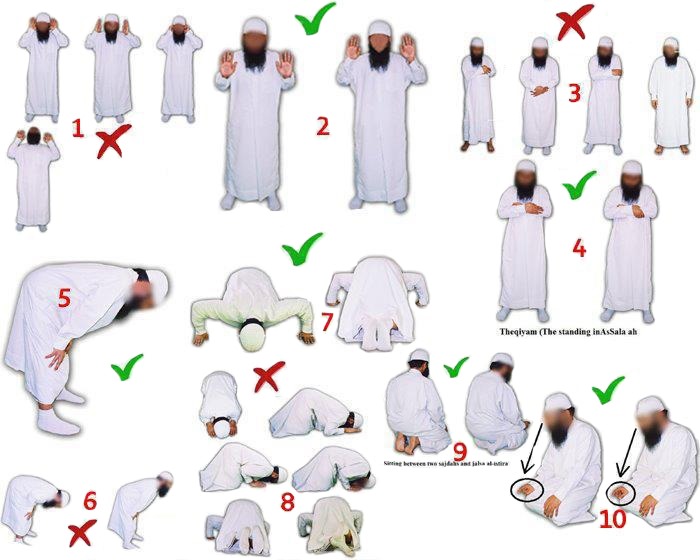
Image 2: An example of a Salafi Do’s and Don’ts guide showing the basic positions for a prayer sequence
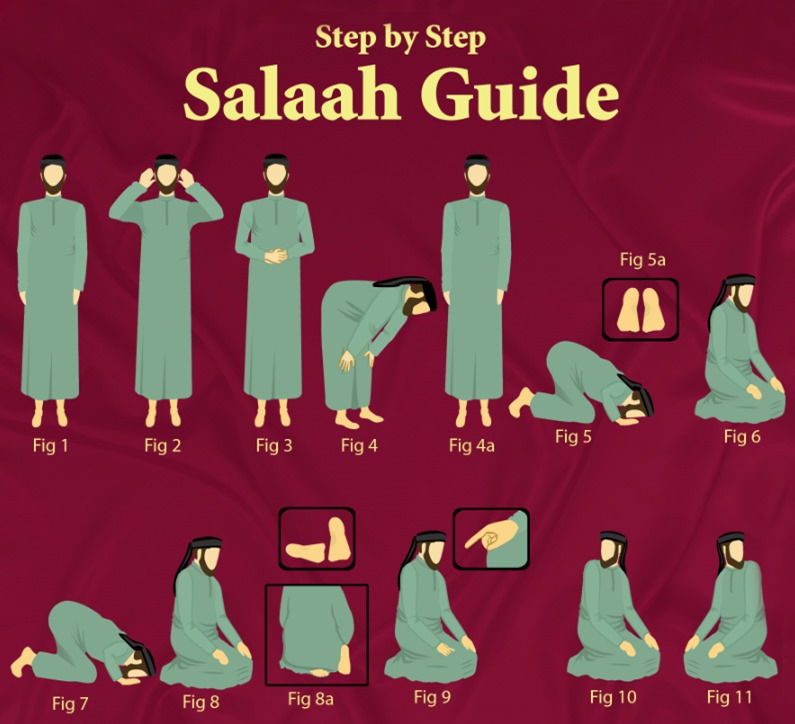
Image 3: An example of a Salafi prayer guide showing the basic positions for a prayer sequence (Note inconsistency in hand placement in Fig 2)
Upon a closer examination of Salafi doctrine, we can find that even the most straightforward ritualistic practices, such as the position of the toes and fingers during prayer, trigger passionate legal debates. Their literature is full of fatwas (religious rulings) on almost every aspect of personal and communal life, including food, hygiene, social interaction, dress, makeup, facial hair, and even jewelry. Because of the highly formulaic and ritualized nature of this movement, among the distinguishing marks of Salafi practice are the dress and the prayer routines. All Muslims are commanded to pray five times daily and perform specific steps during the prayer sequence, such as kneeling and prostration. Salafi practitioners, however, maintain a rigid set of movements that is unique to them. Image 2 illustrates the prayer variations within Sunni streams and Shia.

Image 2: Variations in the performance of the various steps in the prayer sequence across various schools of Islam
Many Shades of Gray
The uniqueness of the Salafi prayer style and practices like dress and grooming are based on the doctrine of a return to the ‘perfect’ historical period of the 7th century. Because of this, the Salafi dogma rejects religious innovations (bid’ah), such as obedience to the secular state, and practices, such as watching movies and playing music. It also calls for the implementation and strict enforcement of sharia (Islamic law) anywhere Muslims live.
Below are two guides on Salafi dress, grooming, and daily prayer sequences. Due to the limited real estate on this page, you need to click on the posters to view and read them in full size.
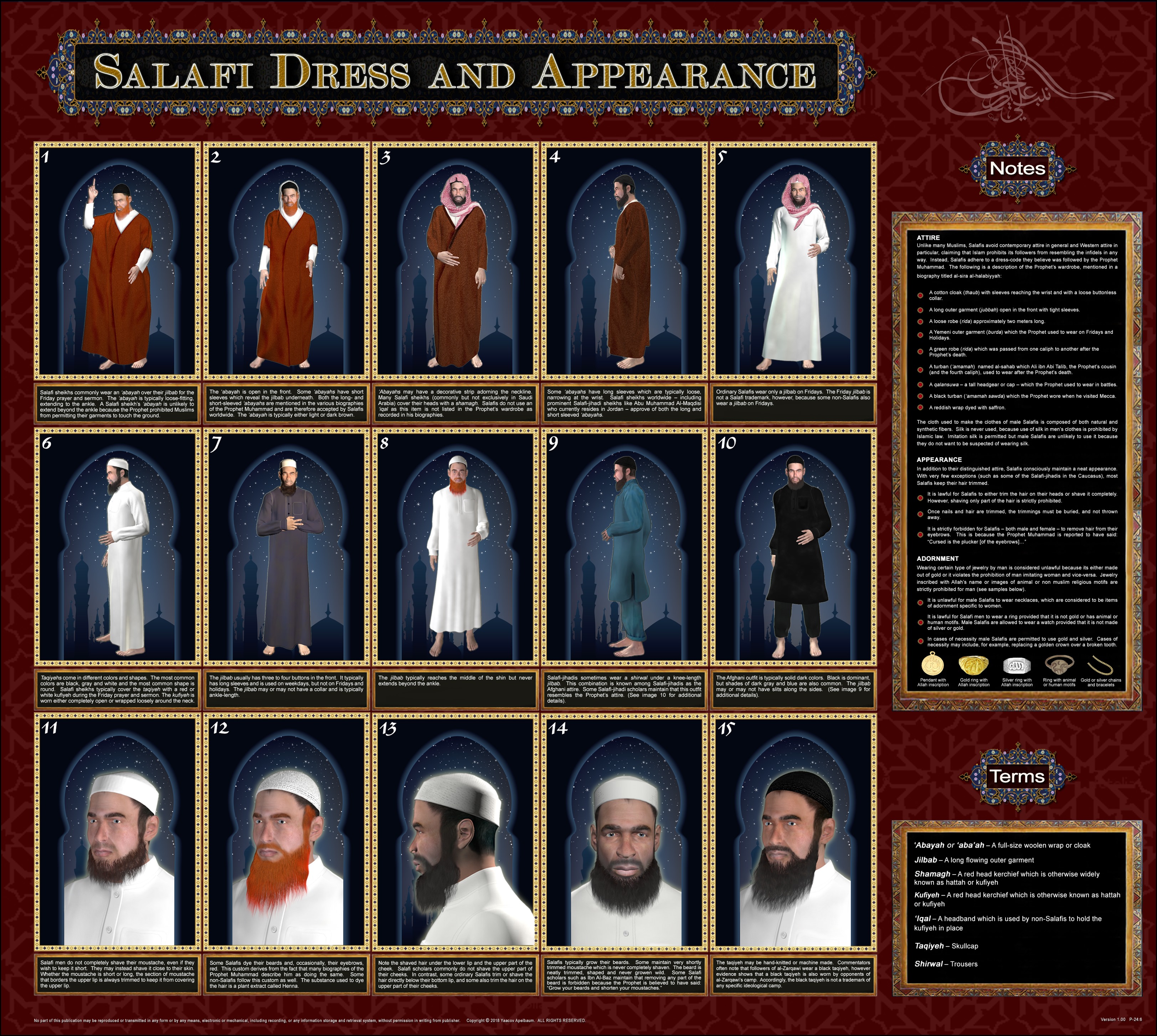
Image 3: Typical Salafi dress, grooming, and appearance. The dress styles represent multiple geographical regions such as the Arabic peninsula, Afghanistan to the Levant.
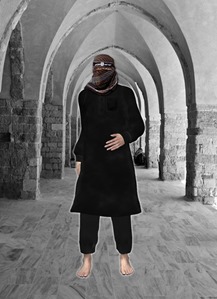


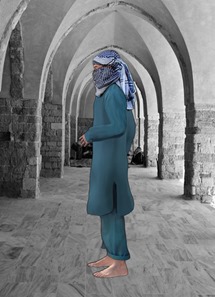
Additional variations of dress and attire (supplement to Image 3)
Image 4: The Complete Salafi Prayer Sequence
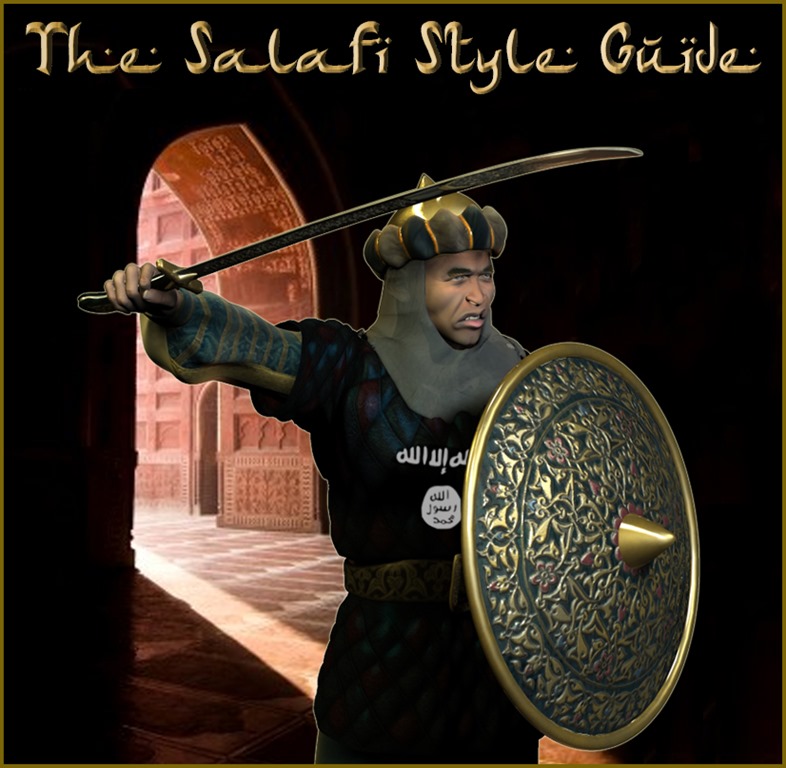
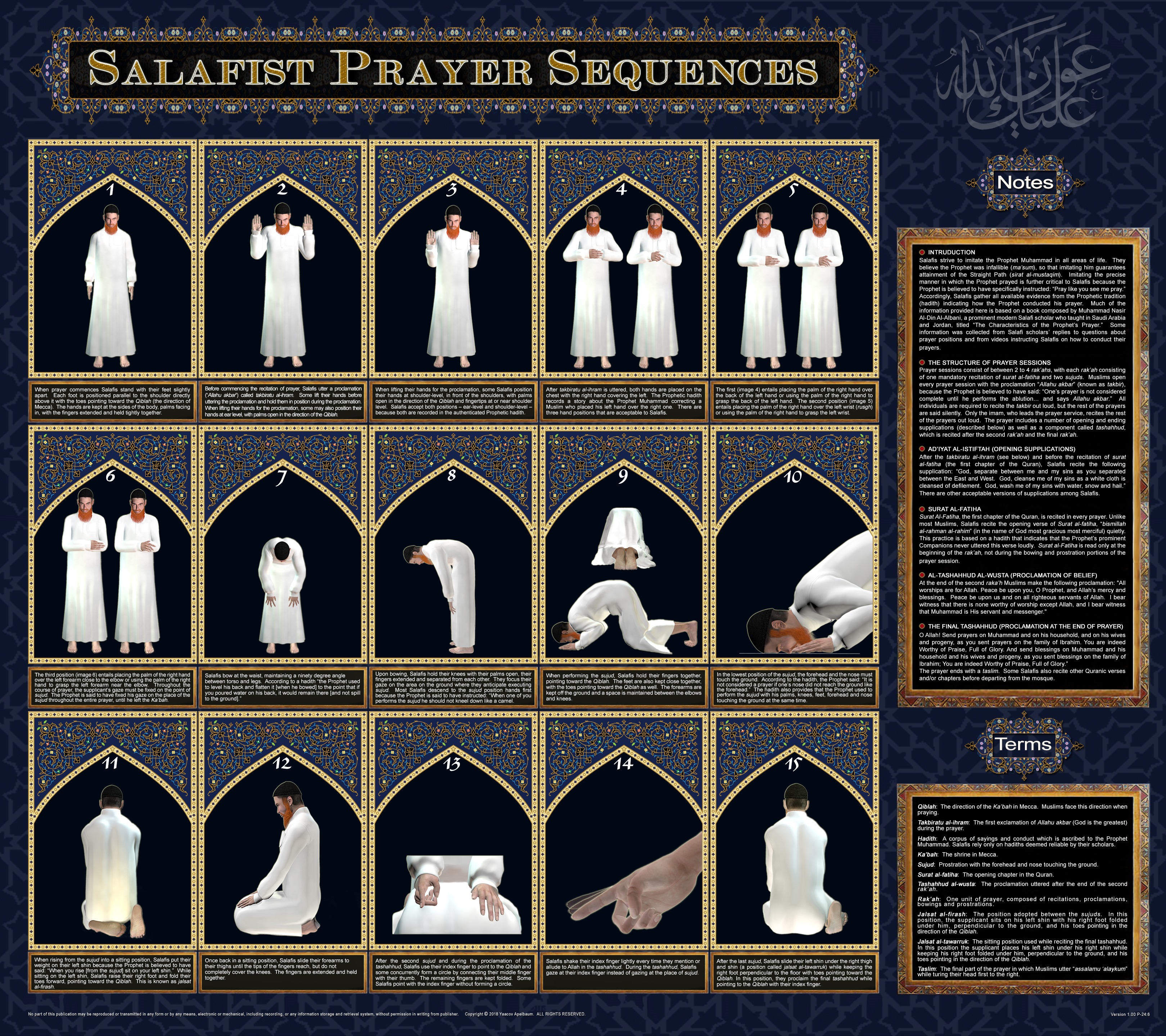
WOW! Great research and good information to have. Thanks.
“ipsa scientia potestas est”
Francis Bacon: Meditationes Sacrae (1597)
I have been reflecting on the quote below:
“There is a lot of legal and ceremonial literature about the Salafism but there also seems to be shortage of basic how−to guides. This appears to be an ongoing problem for new recruits and converts. As Salafi organizations around the world expand through Internet outreach programs, they frequently re−publish various visual aids in an effort to impart the complex religious practices to their new followers.”
I think this indication is extremely interesting. Thank you.
Thank you for your comment, Michael.
Yes, it is an interesting phenomenon (and a useful one…), that the more complex and specialized the religious ritual is, so is the barrier to entry for new recruits and subsequent chatter that it generates.
I studied with a Sunni Turkish sufi sheik and with a Shia Persian sufi sheik. This is AMAZING research. I feel like a toddler reading your research.
Thanks for your feedback and kind words.
Another Masterpiece
Thank you for the kind words, Hugh.
In 1998 I purchased a 15 vol Collection from Celestial Harmonies ‘ Music of Islam’ . The liner notes are a great resource and mirror this work of yours. I recommend this collection.
That’s a great collection! I only have volume four, the Music of the Arabian Peninsula.
I have 11.9 GB of Arabic/Persian music in my collection, 6 GB of India , 84.3 GB of Baroque/Sacred and about 600 GB of Rock/Metal/Blues/Stoner etc..
Music is my hobby. I had a Pirate Radio Station from September 2000 until 2003 when the FCC shut me down. I used a 40 watt FM Transmitter tuned to 90.5 FM that some guy from Berkeley California built me and I tweaked it to get a 13 mile range. It was the funnest time of my life. It inspired my young nephew who now owns LIVE 365 an app that people use to broadcast their content on.
That’s some music library! Any Pergolesi or Handel in the Baroque section? I highly recommend Pergolesi’s Stabat Mater with Margaret Marshall. I must have listened to it a hundred times. Also, anything recorded by Trevor Pinnock or/and the English Concert.
“Stabat Mater dolorosa
iuxta Crucem lacrimosa,
dum pendebat Filius.”
I have used this site : http://hoasm.org/Periods.html as a reference for gathering this style of music.
I have 1,366 CD’s in my Baroque Folder.
My entire Music collection is 7,706 CD’s
When I am on my deathbed I want Gregorio Allegri ‘s- Miserere Messe (1630) playing:(In Latin of course)
Pope Urban VIII loved the piece so much, that he forbid it to be performed elsewhere outside of the Sistine Chapel.
—
Have mercy on me, O God, according to Thy great mercy.
According unto the multitude of Thy tender mercies remove my transgressions.
Wash me thoroughly from my iniquities, and cleanse me from my sin.
I knowingly confess my transgressions: and my sin is ever before me.
Against Thee only have I sinned, and done evil before Thee: that they may be justified in Thy sayings, and might they overcome when I am judged.
But behold, I was formed in iniquity: and in sin did my mother conceive me.
Behold, Thou desirest truth in my innermost being: and shalt make me to understand wisdom secretly.
Thou shalt sprinkle me with hyssop, and I shall be clean: wash me, make me whiter than snow.
Open my ears and make me hear of joy and gladness: and my bones that have been humbled shall rejoice.
Turn away Thy face from my sins: and remember not all my misdeeds.
Create in me a clean heart, O God: and make anew a righteous spirit within my body.
Do not cast me away from Thy presence: and take not Thy holy spirit from me.
Restore unto me the joy of your salvation, and uphold me with a willing spirit.
I will teach those that are unjust Thy ways: and sinners shall be converted unto Thee.
Deliver me from blood, O God, the God of my salvation: and my tongue shall sing of Thy righteousness.
O Lord, open my lips: and my mouth shall spring forth Thy praise.
For Thou desirest no sacrifice, where others would: with burnt offerings Thou wilt not be delighted.
Sacrifices of God are broken spirits: dejected and contrite hearts, O God, Thou wilt not despise.
Deal favorably, O Lord, in Thy good pleasure unto Zion: build Thou the walls of Jerusalem.
Then shalt Thou be pleased with the sacrifices of righteousness, with small and large burnt offerings: then shall they lay calves upon your altar.
********At my Funeral I want Alan Parsons Old and Wise to play as my body is leaving the Church.
As far as my eyes can see
There are Shadows approaching me
And to those I left behind
I wanted you to Know
You’ve always shared my deepest thoughts
You follow where I go
And oh when I’m old and wise
Bitter words mean little to me
Autumn Winds will blow right through me
And someday in the mist of time
When they asked me if I knew you
I’d smile and say you were a friend of mine
And the sadness would be Lifted from my eyes
Oh when I’m old and wise
As far as my Eyes can see
There are shadows surrounding me
And to those I leave behind
I want you all to know
You’ve always Shared my darkest hours
I’ll miss you when I go
Peace
I would be more than happy to send for educational purposes my collection.
HHS
The Miserere Messe is a beautiful piece… I heard the Tallis Scholars perform it at the Rockefeller Chapel at the UoC. They had the female vocalists placed on the second floor of the balcony facing the altar. When they hit the high notes, it felt like they were piercing your soul.
Where does one keep 9K CDs? Have you digitized all of them? You are very kind to offer to share, but it’s more practical if you just send me your Baroque list or your top 100. It looks like you have some real jewels there…